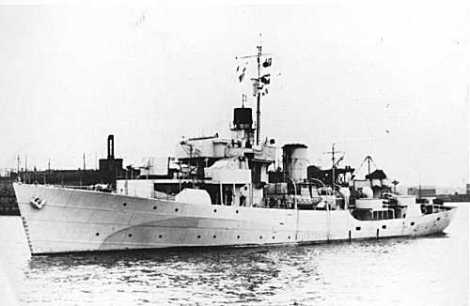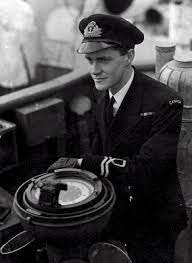Many area residents are proud of the Royal Canadian Navy ship the HMCS Mimico that proudly flew our name on D-Day duty, pipeline laying, escort duty and into her final days as a whale catcher.
The HMCS Mimico was commissioned in the latter years of World War 11 and was one of 16 warships built in the former United Kingdom in exchange for 16 Canadian-made Algerine Minesweepers.
The Flower class corvette was commissioned in Britain in February 1944 and saw service in escort duties in the English Channel and on June 6, D-Day, escorted fuelling craft to the Normandy beaches where Allied armies were pouring ashore to break Hitler’s hold on Europe.
The warship remained as a convoy escort in the English Channel after the invasion, transferring to Portsmouth Command in September 1944 and Nore Command in October.
The Mimico continued invasion support duties when assigned to Opertion Pluto, in the laying of fuel pipelines beneath the Channel.
By November the vessel was escorting the first convoy of coasters to Antwerp and ships from England to Belgium and Holland in dangerous and treacherous waters.
Mimico departed for a two-month refit in February 1945 at Chatham. She returned to service with Nore Command and continued as such until May 1945, when she departed for Canada
“With the end of the war, the HMCS Mimico made her first and final trip to Canada,” according to the vessel’s history. “Her crew members were paid off in May 1945, at Sydney, N.S., and she was turned over to War Assets Corporation for disposal.”
The ship was later sold for conversion to a whale-catcher. It then reappeared in 1950 as the Olympic Victor and in 1956 resold and renamed Otori Maru No.12.
She was renamed one more time, Kyo Maru No.25 in 1962 before being scuttled in Japan in 1976.
Corvettes commissioned by the Royal Canadian Navy during the Second World War were named after communities for the most part, to better represent the people who took part in building them.
“She is named for Mimico, Ontario, a town that was eventually amalgamated into the larger city Toronto, Ontario,” according to Canadian Navy records.
Sponsors were commonly associated with the community for which the ship was named. Royal Navy corvettes were designed as open sea escorts, while Canadian corvettes were developed for coastal auxiliary roles which was exemplified by their minesweeping gear.
The mighty HMCS Mimico was 208 feet in length, 33 feet wide, had a draft of 11 feet, and was propelled by a ‘single shaft, 2 × oil fired water tube boilers, 1 triple-expansion reciprocating steam engine.’
It had a range of 3,500 nautical miles and a speed of 16 knots. It had a complement of 90 men.

